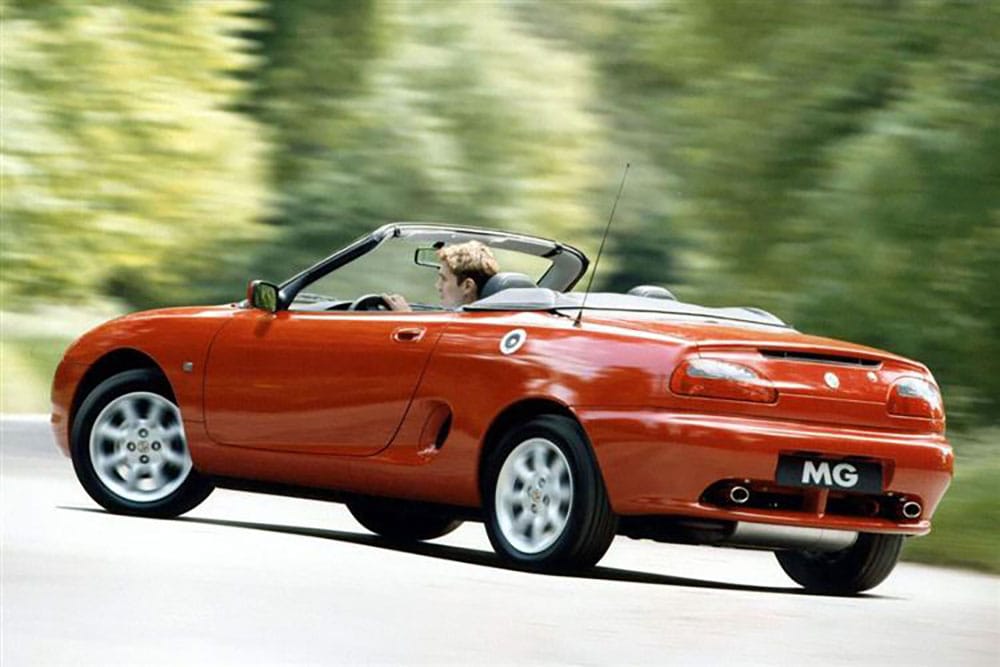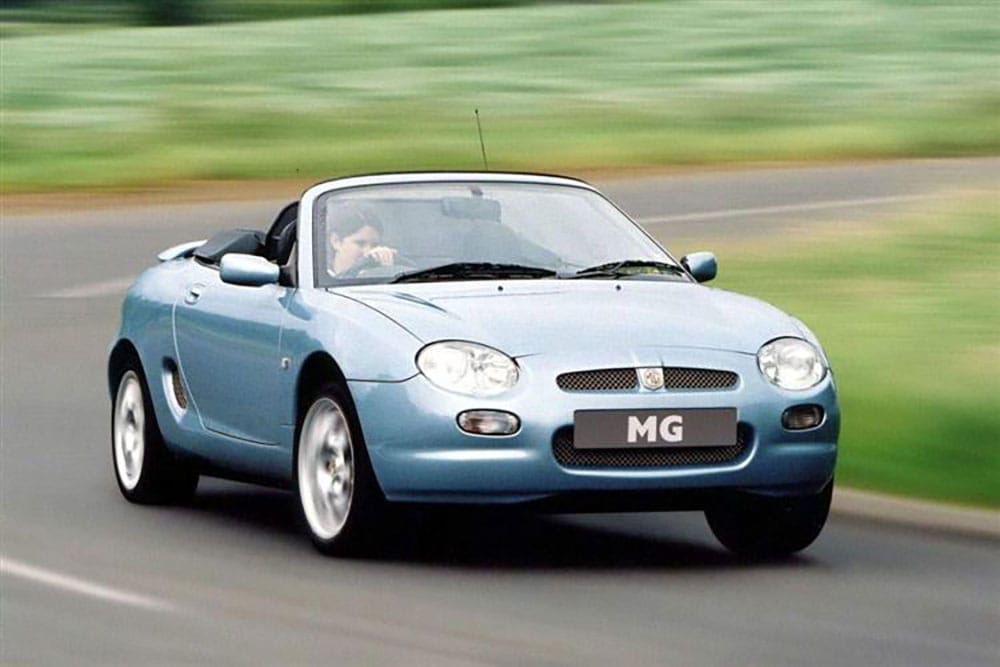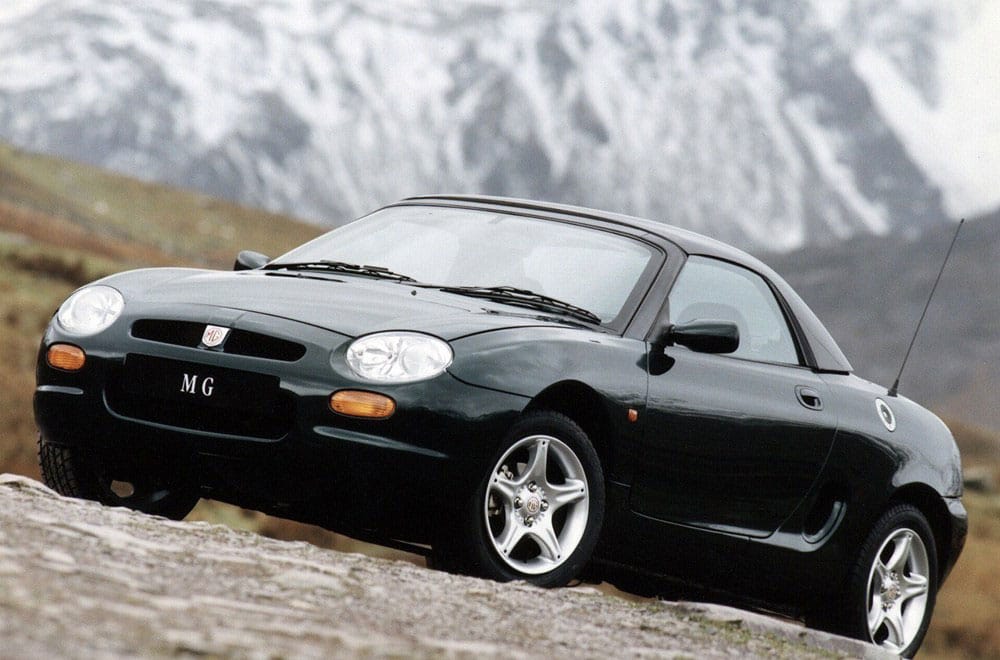
The cessation of production of a long line of traditional MG sports cars came, very sadly but not unexpectedly, with the end of MGB production at MG’s Abingdon factory in 1980. The following years of applying the famous MG octagon only to sporting variants of Austin Rover’s Metro, Maestro and Montego trio of hatchbacks and saloons was controversial but successful, not least in keeping the famous brand alive.
‘What If’ Projects Kept the MG Dream Alive
During this period, several ‘What If’ projects and ideas for returning the MG badge to a sports car came and went, one or two being shown to the public, such as the very technologically advanced MG EX-E, a quantum leap forward from the much loved but old and tired MGB of a handful of years before. The MG EX-E raised public expectations of what a new MG sports car could be like, but it would be 1995, 10 years on from the EX-E unveiling, before the public could get their hands on the MGF.
Behind the Scenes: The PR3 Project Takes Shape
During that 10 years of apparent hiatus, plenty was actually going on in the background but, given the climate for Austin Rover, soon to become the privatised Rover Group within British Aerospace and later BMW, no serious moves towards production of a new MG sports car would be sanctioned. Then in 1989 came the release of the immediately hugely successful Mazda MX5 roadster and Rover Group were spurred into action: they’d lost the lead for getting a new medium volume-production roadster into the market, and now they’d have to act quickly to get a significant piece of that market share back.
By late 1991, the PR3 project styling was looking noticeably like an MGF, and its use of Rover componentry rather than drawing parts from Rover’s collaborations with Honda became fixed over the next couple of years: the layout would be mid-engined, the engines themselves would be Rover’s K Series, including a new version with variable valve timing, the gearbox Rover’s PG1, the suspension and subframes derived from Metro – including the Hydragas system, which raised quizzical eyebrows at the eventual launch of the car, until the car was driven and the suitability of the suspension understood.


A Groundbreaking Partnership Brings the MGF to Life
The bodies of the PR3 (as it was still known internally) sports car would be, in a ground breaking, cost saving arrangement between Rover Group and Mayflower Vehicle Systems (formerly the famous old Motor Panels Ltd), tooled up for and built by Mayflower in their Coventry plant and then shipped to Longbridge for painting, trimming and final assembly – and, come 1995 and the launch of the MGF, that’s exactly what happened.
The MG RV8 Sets the Stage
In 1992, Rover Group announced to the world a new, low volume sports car that would set the scene and prepare the motoring world for the launch of the higher volume production MGF a couple of years later. The MG RV8 was of course far closer to the old MGB than the upcoming MGF, but its exceptionally low development costs, made possible by it being heavily based upon the MGB bodyshell that was being produced by British Motor Heritage for the classic car marketplace, made it relatively quick and easy to bring to fruition as a precursor for a new MG sports car.
So by 1995, the world was ready, and so was the new MGF. Actually, at launch Rover’s marketing department decreed that the ‘F’ of MGF should always be seen in print as an italic character, so becoming MGF. Seen by some – motoring magazines included – as a bit of marketing frippery at the time, this slightly idiosyncratic feature in the appearance of the printed name of the car has endured in many circles to this day, 30 years later – not here, though, in the interests of being easier on the eye!
The Motoring Press Fell in Love with the MGF
The motoring press genuinely loved the MGF at launch. The car received very warm reviews from just about everyone, and even those who were ready to criticise the use of supposedly unsporting Hydragas suspension changed their tune once they’d driven an MGF. It was well sorted dynamically, not at all difficult or requiring expertise to drive and have fun with, well put together and, in short, a very strong competitor for the front engined, rear wheel drive Mazda MX5 against which it would always be compared, despite the complete contrast in mechanical layout and weight distribution of the MGF’s mid-engined design.
At the 1995 launch, and for the four years following, the MGF was available in two versions, one with a standard 1.8 litre K Series twin cam engine producing 120bhp and the other with the same capacity engine but fitted with variable valve timing ‘VVC’) which raised maximum power to 145bhp. Sales were very bouyant, quickly settling to around 14,000 cars per year, enough to ease the Mazda MX5 out of the top slot in UK and European sports car sales.


An Opportunity Lost Across the Atlantic
Where the MGF lost out to the MX5 was in Transatlantic sales. During the production life of the MGF, the Mazda MX5 averaged 20,000 sales per year in North America alone, a hugely lucrative sports car market completely denied to the MGF because Rover Group’s owner’s BMW didn’t want Rover putting up a perceived competitor to their own Z3 in North America. An opportunity well and truly lost, and made more painful by the fact that the MGF had been designed and engineered with relatively easy adaptability for the American market regulations in mind.
Refinements Arrive: The Mk II MGF
In 1999 the MGF range was expanded and the car was refreshed with a revised interior and other detailing changes. Known by the factory from the start as the Mk II MGF, the car was never badged as thus, the quick identifier if you saw one in the street being that the windscreen surround was body coloured, rather than black. While the 1.8L and 1.8L VVC models were retained in the range, they were joined by a new entry level 1.6L and an uprated and bewinged version of the 1.8L VVC called the Trophy 160, the ‘160’ parading the Trophy’s maximum engine power being 15bhp more than the standard VVC at 160bhp.
Additionally in the Mk II range came a new Steptronic transmission fitted version of the 1.8L MGF, the first time anything other than a conventional manual 5 speed gearbox had been offered. Featuring steering wheel paddles for sequential gearchanges, the Steptronic employed a slightly detuned version of the 1.8L K Series engine mated to the constantly variable auto-transmission (‘CVT’) employed by some of Rover Group’s saloon cars. The MGF Steptronic certainly found its fans in the marketplace, but in the great scheme of things didn’t make much of an impression in the sales charts.

In 2000, more proposed updates and changes were in the pipeline when everything was thrown into the air by BMW’s decision to divest itself of the majority of Rover Group. Rover’s Small & Medium Car Business Unit at the Longbridge factory complex was sold to Phoenix Venture Holdings, minus the still under development ‘new’ Mini, which was moved from Longbridge to the Oxford factory that BMW had decided to retain. When the dust settled (if it ever really did), the Longbridge engineers working for Phoenix’s MG Rover company recommenced their development work on the next MGF.
Come 2002, the new car was presented to the world as the MG TF, a car still very recognisably deriving from the MGF though much changed and improved in several areas, a very good car laid low by the misfortunes and struggles of MG Rover culminating in the company’s demise in April 2005. That’s a story with many twists and turns in it, and a story for another time.
A Legacy to Be Proud Of
The MGF was undoubtedly successful, selling well and frequently topping the sports car sales tables in the UK and Europe during its production life. In total, just over 77,000 MGFs were built and sold in six years. That beats outright by some margin the non-North American sales of other, earlier great British sports cars like the Triumph TR6 and MGB, the bulk of whose total sales were in that lucrative North American market, a market denied by internal company politics to the MGF.
Happy 30th birthday, MGF. Can’t believe you’re that old already.
Pete Taylor, Editor.
Back To News

